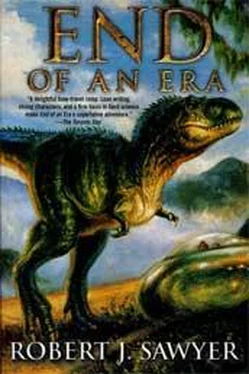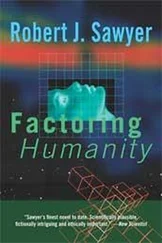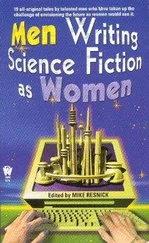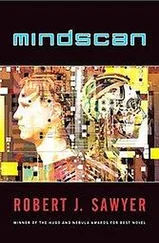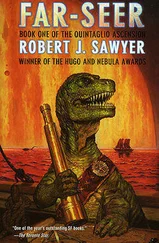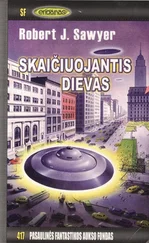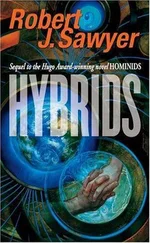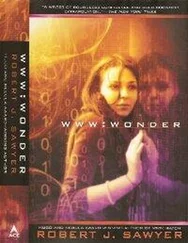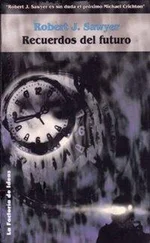Robert Sawyer - End of an Era
Здесь есть возможность читать онлайн «Robert Sawyer - End of an Era» весь текст электронной книги совершенно бесплатно (целиком полную версию без сокращений). В некоторых случаях можно слушать аудио, скачать через торрент в формате fb2 и присутствует краткое содержание. Год выпуска: 1994, ISBN: 1994, Издательство: Tor Books, Жанр: Фантастика и фэнтези, на английском языке. Описание произведения, (предисловие) а так же отзывы посетителей доступны на портале библиотеки ЛибКат.
- Название:End of an Era
- Автор:
- Издательство:Tor Books
- Жанр:
- Год:1994
- ISBN:0-312-87693-9
- Рейтинг книги:3 / 5. Голосов: 1
-
Избранное:Добавить в избранное
- Отзывы:
-
Ваша оценка:
- 60
- 1
- 2
- 3
- 4
- 5
End of an Era: краткое содержание, описание и аннотация
Предлагаем к чтению аннотацию, описание, краткое содержание или предисловие (зависит от того, что написал сам автор книги «End of an Era»). Если вы не нашли необходимую информацию о книге — напишите в комментариях, мы постараемся отыскать её.
century value and dinosaurs that behave very strangely. Could the slimy blue creatures from Mars have something to do with both?
End of an Era — читать онлайн бесплатно полную книгу (весь текст) целиком
Ниже представлен текст книги, разбитый по страницам. Система сохранения места последней прочитанной страницы, позволяет с удобством читать онлайн бесплатно книгу «End of an Era», без необходимости каждый раз заново искать на чём Вы остановились. Поставьте закладку, и сможете в любой момент перейти на страницу, на которой закончили чтение.
Интервал:
Закладка:
“So you decided to make your move.”
“I’ve got news for you, Brandy. I didn’t go after Tess. She came after me.”
“What?” I felt my world crumbling around me.
“Ask her, if you don’t believe me. You think I’d go after my best friend’s wife? Christ, Brandy, I turned her down three times. Do you think that was easy for me? The Tyrrell Museum is in a pissant all-white Prairie town, for God’s sake. I’m middle-aged and have permanent dirt under my fingernails from years of fieldwork. How many of the women in Drumheller do you think wanted to get down with me? Jesus, man. Tess is gorgeous and I pushed her aside three fucking times for you. I told her to work it out with you, to return to her husband, to not flush nine good years down the toilet. She kept coming back. Can you blame me for finally saying yes?”
I looked away, my eyelids locked shut to prevent tears from escaping. The moment between us stretched to a minute, then two. I didn’t know what to say, what to do, what to think. I wiped my eyes, blew my nose, and turned to face Klicks. He held my gaze for only a second, but in that second I saw that he’d been telling the truth and, worst of all, I saw that he pitied me. He got up and put his coffee cup in the trash.
Thirty-eight more hours, I thought. Thirty-eight more hours until we return. I didn’t know if I could take it, being here with him, being here with my memories of her—
It was night. Time to go to bed. I’d have to take sleeping medication again, or else I’d toss and turn until dawn, tormented by what Klicks had said.
I began to gather my pajamas.
“You’ve got a job to do,” said Klicks.
I looked at him, but didn’t trust myself to speak.
“The night-sky photo.”
Oh, right. I would have done it last night, except it was clouded over. I went through door number one, but instead of going down the ramp to the outer hatch, I went up the little ladder, angled at forty-five degrees, into the instrumentation dome on the roof. In training, I’d always found climbing that ladder hurt my palms, given that my full weight was on them, but in this lower gravity, it wasn’t uncomfortable at all.
The instrumentation dome was about two meters across and made of glassteel. Several cameras were set up to shoot through its transparent walls, and a vertical slit, very much like that in an observatory dome, let the warm Mesozoic night air flow into the sensors within. The slit closed automatically when rain was detected.
Several automated cameras were taking sky photographs, and one tracked the sun during the days. But there was one astronomical photograph the staff of the Dominion Astrophysical Observatory had asked us to take that couldn’t be easily automated, and that was a traditional time-lapse night-sky photo. See, all our automatic cameras were off-the-shelf models, and they had automatic exposure timers, but none of them went past sixty seconds. The photo the DAO wanted required an exposure of four hours, and that demanded manual intervention.
I’d originally volunteered to bring along my Pentax to take this photo, but when I’d asked that jerk from my insurance company if my personal belongings would be covered if I took them 65 million years into the past, he didn’t miss a beat: “Sorry, Mr. Thackeray, that would mean that any loss or damage took place before the effective coverage date of your policy.” Oh, well. In the end, we’d borrowed a fancy electronic camera from the McLuhan Institute at U of T. It, too, only had a short-term exposure timer, but it also had a manual shutter and so I did what generations of sky photographers had done before me: I set up the camera in the dark, slipped a rubber band around its case to hold the shutter button down, then gingerly removed the lens cap.
The result would be a time-exposure photo—an electronic one, since this was a filmless camera—with arcs representing the paths of stars through the night sky. The common center of all these arcs would indicate Earth’s true north pole. Also, such a photo would show the tiny streaks of meteors. A count of those would give some indication of how much debris was floating around local space, and, given we knew how long the exposure had been for, a precise measurement of how many degrees the arcs encompassed would tell us the exact length of a Cretaceous day.
I fiddled with the tiny studs on my wristwatch—I always found the thing frustrating to operate—and set the alarm for four hours from now, which would be at something like 3:00 a.m. local time, so that I would get up and put the lens cap back on the camera.
I headed down the ladder, back through door number one, and into the habitat. Klicks walked over to me. “Here,” he said gently, proffering a cup of water and a silver sleeping caplet. I accepted them silently.
There was a long moment between us, a moment when we both thought over the words we had exchanged. “She did love you,” Klicks said at last. “For many years, she loved you deeply.”
I looked away, nodded, and swallowed the bitter pill.
Countdown: 2
Things are in the saddle,
And ride mankind.
—Ralph Waldo Emerson, American writer (1803–1882)Like most people, I guess, I only remember my dreams when I wake during them. I was dreaming about Tess, her wild mane of red hair; her intelligent green eyes; her slim, almost girlish figure. It wasn’t Tess Thackeray, my wife, though. No, this was the reborn Tess Lund, a name that had been retired years ago but was now pressed back into active service by the liberation of divorce.
Tess was lying naked in bed, the twin light of two moons playing across her heart-shaped face, lofty Luna still accompanied by tiny Trick. Someone was in bed with her, but it wasn’t me. Nor was it a stranger, which probably would have been a less disquieting sight. No, the powerful brown arms wrapped around her pale waist belonged to Professor Miles Jordan, bon vivant , respected academic, my friend. My best friend in the world.
I was observing them, a disembodied camera, through a window in her bedroom. It had changed since the days when I had shared that room with Tess: the furnishings were richer, more refined. Our old queen-sized bed had been replaced with an elegant Victorian four-poster. Its canopy, a tapestry of pension and benefit contracts, was raised high over their heads by thick brown poles carved from mahogany trunks.
Tess was talking to Klicks in that sexy, deep voice that always seemed so incongruous coming out of her tiny body. She was telling him about me, sharing with him all my deepest, darkest secrets—an endless succession of humiliations, defeats, and shames. She told him about my fascination with my cousin Heather and the horrible public scene Heather had made when I’d drunkenly tried to act on those emotions at her brother Dougal’s wedding. She told him about the time I was caught shoplifting at age thirty-four, walking out of a Lichtman’s with a stupid porno magazine that I was too embarrassed to take up to the cash counter. And she told him about the night a mugger beat the crap out of me in Philosopher’s Walk behind the museum, and, finding that picture of my mother in my wallet, had, cruelly, oh so cruelly, forced me to eat it.
Klicks listened raptly to everything Tess revealed about me, things so hidden, so private, so personal that Doc Schroeder would have given his eyeteeth to hear me divulge them on that sticky vinyl couch of his. Klicks heard secrets that should have been mine alone to carry to my grave. He knew my very soul. The thought of him living and knowing such things, having such power over me, was unbearable—
Beep!
Klicks stroked Tess’s mane, his thick fingers passing gently through the orange strands the way mine used to, the way mine still ached to do each time I ran into her. I thought for a moment that he was going to laugh at what she had told him, but what he did was much, much worse, cutting me like troo-don teeth. “There, there,” he said, his too-smooth baritone the perfect complement to her throaty sexiness. “Don’t worry, Lambchop"— Lambchop!— "He’s gone now.”
Читать дальшеИнтервал:
Закладка:
Похожие книги на «End of an Era»
Представляем Вашему вниманию похожие книги на «End of an Era» списком для выбора. Мы отобрали схожую по названию и смыслу литературу в надежде предоставить читателям больше вариантов отыскать новые, интересные, ещё непрочитанные произведения.
Обсуждение, отзывы о книге «End of an Era» и просто собственные мнения читателей. Оставьте ваши комментарии, напишите, что Вы думаете о произведении, его смысле или главных героях. Укажите что конкретно понравилось, а что нет, и почему Вы так считаете.
